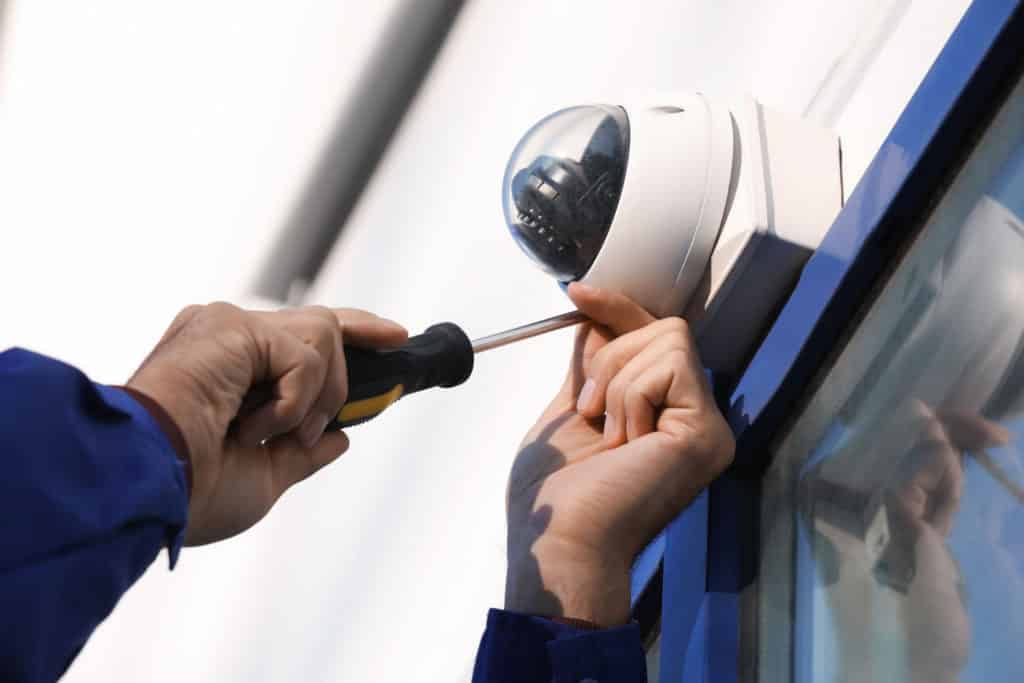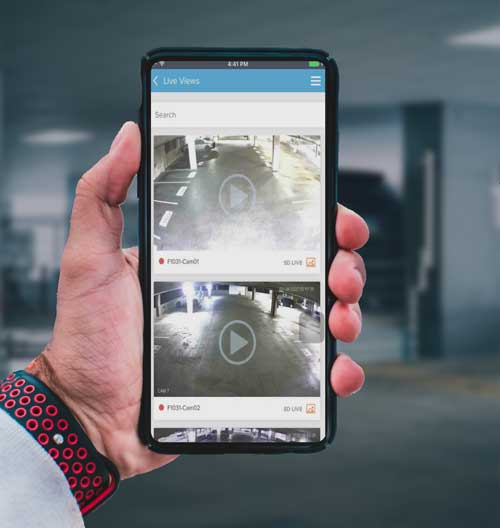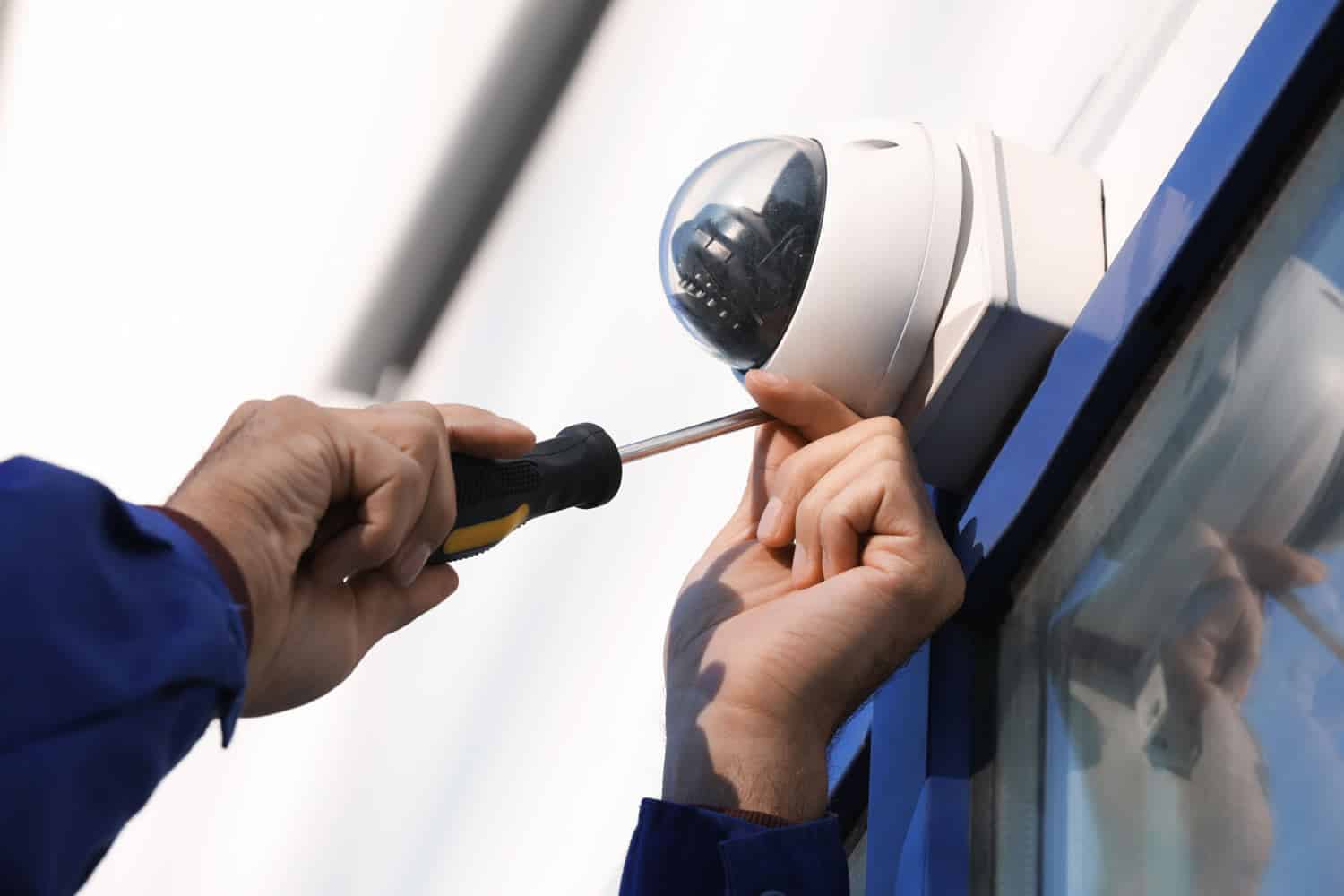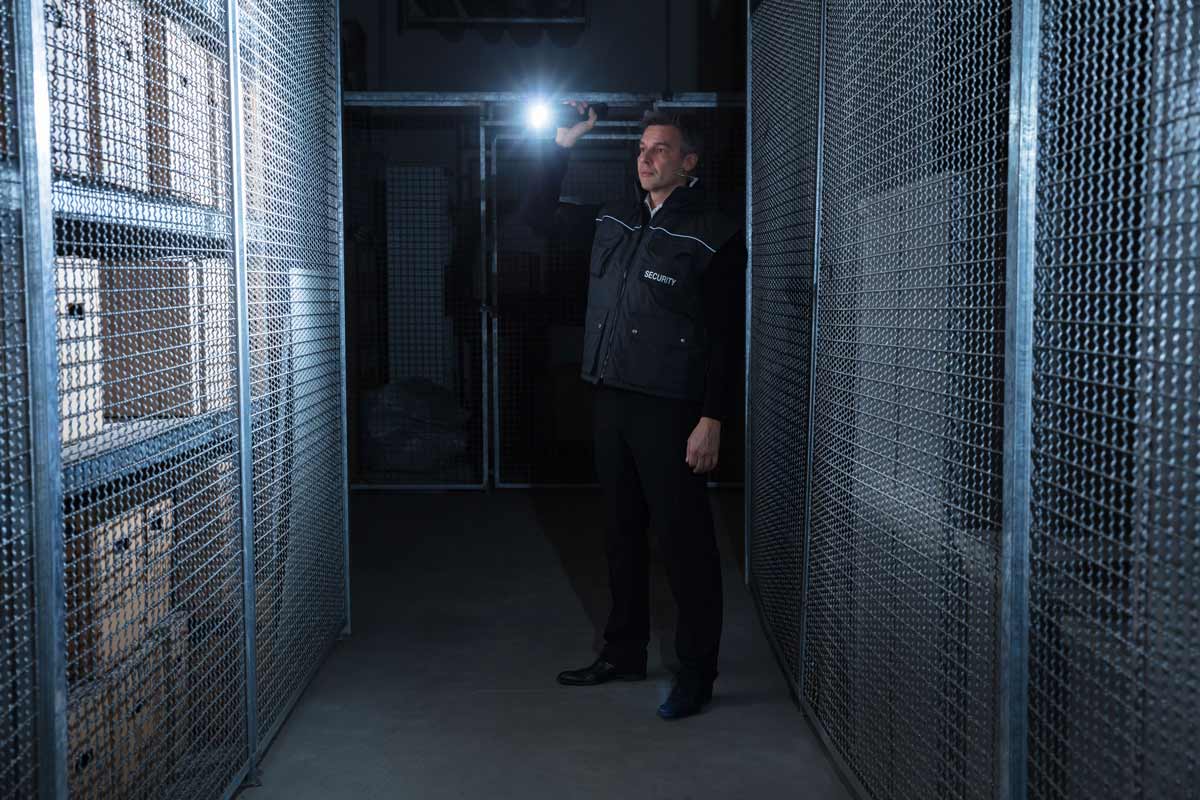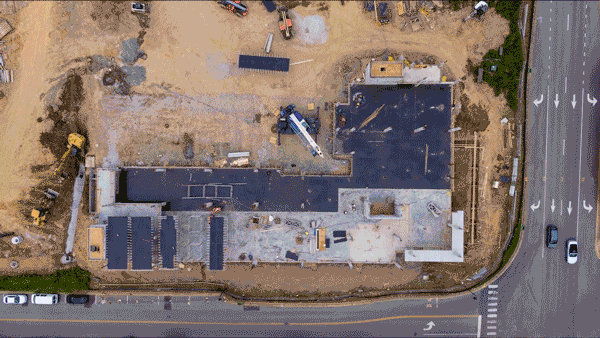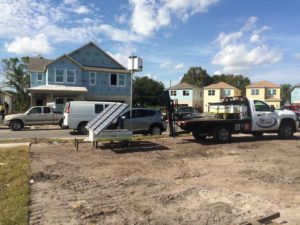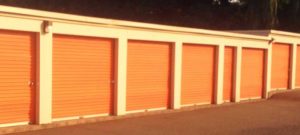Most business owners understand the importance of security and protection. However, they may think installing a surveillance camera system may be too expensive. The opposite is true; it’s too costly—and risky—not to install video surveillance. This blog will weigh surveillance camera installation costs against their value to your business.
Understanding the Costs of Business Camera Surveillance Systems
Thinking about the cost of security systems solely in terms of things like the surveillance camera installation price may be tempting (and easy), but it doesn’t give the whole picture. Rather than asking yourself “how much does it cost to install security cameras,” ask yourself “what value will I get out of this expense?”
Business video surveillance systems can cover a lot of ground, both inside and outside a business. Many systems today can integrate with mobile or web devices and can feed you or a security team video in real time so you can see what’s going on. Imagine receiving a text from your video surveillance software that lets you know there’s a trespasser in your parking lot.
There are myriad benefits a modern camera surveillance system offers that go beyond capturing video images of someone breaking into your building.
Today, you can watch customers or employees in real time. The video your surveillance system captures can be useful for insurance, handling worker’s compensation claims, or for law enforcement. You can even use modern camera technologies to scare off criminals by sounding audible and visual alerts.
Additionally, surveillance systems can also be a valuable tool in improving employee productivity by encouraging them to stay focused and discouraging non-work-related activities during office hours. It may also provide valuable operational insights that may help improve day-to-day operations and increase revenues, detect potential fire hazards or safety violations to prevent accidents and reduce property damage, and provide identity verification and remote access to ensure that only authorized individuals can access the premises.
For full protection, virtual guards can monitor your cameras, and as you’ll see, they are much more cost-effective than a traditional on-site physical presence.
But how much will installing a surveillance system cost you? The price of any technology installation varies by the number of features you select. When considering a new surveillance system, a variety of factors come into play that increase or decrease costs.
For example:
Wireless IP cameras save money on security camera installation costs; there’s no wiring needed. Wireless cameras are generally easier to set up as well as easy to use. However, the camera itself may be slightly more expensive.
Security camera installation cost is also affected by the type of cable used (e.g., Ethernet, coaxial, or wireless) and the distance between the cameras and the recording equipment. Expect to pay more if your system requires long cable runs or complicated wiring.
It’s a good idea if you’re worried that thieves or vandals could take out your cameras. This could add slightly to the cost.
You can select weather-hardened cameras that can stand up to some very rugged conditions. However, please be aware that outdoor cameras are typically more expensive because they need to be weatherproof and durable to withstand harsh environmental conditions.
Using visible vs. discreet cameras can have different benefits. Installing security cameras in plain view can discourage dishonest or inappropriate behavior, reduce the possibility of false claims, and deter criminal activity, such as theft, vandalism, and trespassing. Customers, staff, and visitors also feel more secure when they know they are being watched.
Moreover, visible cameras can prompt quicker responses from security personnel or law enforcement in the event of an incident as they can easily identify the location of the cameras and access the footage.
While the choice between visible and discreet cameras depend on your specific security goals, the environment in which they will be deployed, legal and ethical considerations, and your budget, using a combination of visible and discreet cameras is highly recommended to achieve a healthy balance between deterrence and covert monitoring.
While we don’t know why you would consider anything less than HD quality, the higher-end cameras are more expensive. However, if the resolution is poor, you’ll have a harder time discerning detail. Today’s cameras offer crystal clear viewing, not just in HD, but also with night vision viewing. This will help you see exactly what’s going on after hours at your business.
This is a tricky issue that requires a careful analysis of your business. What blind spots exist? Do you want to monitor the parking lot, where crime is often prone to happen? Consider the coverage area and the specific areas you want to monitor to determine the number of cameras you need to install. Evidently, the number of cameras, as well as the features you’ll need, requires some experience in setting up surveillance systems so look for a vendor with proven experience in this area.
Surveillance camera installation costs include more than just the installation itself. If you’re adding video surveillance to your business, the process will be typically broken out into three primary categories:
Hardware
Hardware is typically the biggest cost of the entire system. You can expect to pay somewhere between $1,000 and $10,000. Typically, we see about $3,000 invested in hardware. But all of the factors we’ve written about (e.g., the number of cameras and their features) play a role.
First, you have to consider the cost of the camera. Basic analog cameras can cost around $50 per unit, while high-end IP cameras with advanced features can cost several hundred dollars each. Then, you’ll also need recording equipment (DVRs for analog systems or NVRs for IP systems), which may set you back another $200 for entry-level DVRs or NVRs and thousands of dollars for high-capacity, enterprise-grade units.
You’ll also need cabling (e.g., Ethernet, coaxial, or wireless) and connectors, junction boxes, and conduits for cable management. Collectively, these may cost you anywhere from a few dollars to several hundred dollars, depending on the scale of the installation.
To complete the setup, you’ll need monitors (minimum $100 per unit), additional external hard drives or network-attached storage (NAS) devices (for storing video footage for extended periods), power supplies, mounting brackets, housings, and weatherproof enclosures (for outdoor cameras), and additional hardware components such as power surge protectors, UPS (Uninterruptible Power Supply) units, or audio equipment.

Installation
Security camera installation and activation costs can vary from $300 to $700. Installation is less if your cameras are wireless. But they still will need to be hooked up through the cloud to record and store the video you capture.
Security camera installation and activation costs can vary widely based on the number of cameras, the complexity of the installation, the size of the project, and whether you are hiring a professional installation team or installing the security system yourself. For larger and more complex security system installations, however, hiring professional installers is highly recommended.
In general, security camera installation costs can range from a few hundred dollars for a small system to several thousand dollars for a comprehensive commercial setup. Some areas may also require permits for security camera installations.
Once the cameras are installed, they need to be configured (often included in the installation cost). This includes setting up camera angles, resolution settings, motion detection, and network settings.
If you’re using IP-based systems, you may also need to hire a specialist to set up a network infrastructure, configure routers and switches, ensure a stable internet connection, and configure your software and mobile apps.
Integration with Other Systems
Integrating your security cameras with other systems like alarms, access control, or smart home automation can also impact security camera installation cost.
Maintenance and Support
For long-term operation, you’ll need to factor in ongoing maintenance, software updates, and technical support to the overall cost. This can range from $100 to $500 or more per year, depending on the level of service required.
Business monitoring
Business monitoring is particularly important for all-around protection. The idea of a virtual security guard service is that you have a trained team monitoring your video surveillance system 24/7. Instead of traditional security guards, who can be exorbitantly expensive, trained off-site guards can monitor your business and save you considerable money. Live guards cost an average of $13.50 per hour. Virtual guards at Pro-Vigil cost a fraction of that.
Let’s explore the point raised in that last bullet a little more fully: Is virtual surveillance more effective than a private security guard company? Virtual guards come out ahead on costs, but are there other pros and cons to consider when installing this service?
A live guard offers a physical deterrence, and lets you save money on video surveillance camera installation costs. But a live guard cannot see all the nooks and crannies of your property simultaneously. Virtual guard services watch a bank of monitors connected to the video cameras at your property. They see just about everything going on in real time. They can also remotely activate your video surveillance cameras to zoom in or even sound an audible or visual alarm to scare away intruders.
Virtual guards do not have a risk of being injured on your property. A live guard could trip and fall or otherwise injure themselves. This could leave you open to legal trouble or worker’s comp claims.
The True Value of Surveillance Cameras
When considering the video surveillance installation cost, it is critical to think about the long-term benefits. Enhanced security can reduce incidents of theft and vandalism, significantly decreasing losses and insurance premiums. Surveillance cameras often pay for themselves quickly through these savings alone.
Beyond financial savings, the presence of surveillance cameras can also improve customer and employee confidence, as people feel safer knowing the environment is monitored. This enhanced feeling of safety can translate into higher customer retention rates and increased employee morale, which are invaluable to a business’s reputation and overall success.
Moreover, surveillance footage can provide vital evidence in the event of disputes or litigation, potentially saving your business from costly legal fees. The ability to clearly document incidents can streamline resolution processes, making your operation more efficient and less vulnerable to frivolous claims or misunderstandings.
How to Install Video Surveillance Cameras
When considering video surveillance installation, it’s important to evaluate your business’s specific needs. The average cost for CCTV installation depends significantly on factors such as the number of cameras, wiring complexity, and camera resolution. Professional installation services ensure optimal placement and performance, maximizing your system’s effectiveness.
The installation process typically begins with a thorough assessment of your business premises. Professional installers will identify strategic locations that maximize coverage and minimize blind spots. They’ll consider environmental factors, such as lighting conditions and exposure to weather, to ensure optimal camera functionality.
Additionally, hiring experienced professionals helps prevent common installation errors that could lead to poor image quality, insufficient coverage, or system vulnerabilities. Proper installation ensures your surveillance system operates smoothly, securely, and reliably, giving you peace of mind and protecting your investment.
Pro-Vigil knows a thing or two about surveillance system installation. We offer a full video surveillance package that includes 24/7/365 monitoring for 30-cameras that can cover every area on your property. Virtual surveillance acts in the same as a live security guard; but the savings are substantial.
If you’re weighing the surveillance camera installation costs, the most important question you should ask is: Can I afford not to install security cameras in my business? Pro-Vigil is one of the leading security companies in the nation and we can help design a protection package suitable for any need or budget. Talk with our team today to find out more.
Security Camera Installation FAQs
The cost typically ranges from a few hundred dollars for basic setups to several thousand – or even more – for extensive commercial installations. Factors such as camera resolution, field of view, installation height, and remote access features all impact the final price. Business owners should also budget for ongoing maintenance and potential system upgrades.
Key factors include the number of cameras, camera type, installation complexity, wiring requirements, and additional features such as night vision and weatherproofing. Businesses operating in multiple buildings or across large areas will generally incur higher costs due to more complex logistics and longer installation times.
Yes, wireless camera installations are generally cheaper due to simpler setup and fewer wiring requirements. However, wired systems may offer greater reliability and bandwidth for high-resolution recording, especially in environments with poor wireless connectivity. Choosing between the two often depends on your building layout, internet infrastructure, and long-term needs.
Yes, the more cameras installed, the higher the overall cost. Each camera adds not only hardware costs but also labor, cabling, and configuration time. It's important to assess your exact surveillance goals to avoid over-purchasing while still covering key areas effectively.
Higher resolution cameras are typically more expensive and can increase overall installation costs. In addition to the cameras themselves, 4K systems may require upgraded storage solutions and higher-capacity networking hardware to handle the increased data volume. While more costly upfront, high-resolution cameras can be crucial in environments where detail is essential, such as retail loss prevention or legal documentation.

